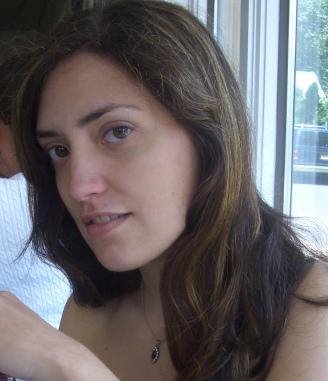Curb your enthusiasm?

A lot of labs in my field are doubtless interested in a newly-reported compound, platensimycin, which showed potent antibacterial activity in the lab against pathogens that are resistant to multiple antibiotics. The structure is certainly intricate, what with five interlocking rings. Here's the reference:
Wang, J. et al. Nature 2006, 441, 358–361.
Researchers at Merck verified that platensimycin, which was isolated from a simple soil microbe in South Africa, inhibits a key enzyme that bacteria use to make fatty acids. This is cool because it's different from a lot of the antibiotics used in the clinic. Researchers realize that it's important to find new classes of antibiotics in order to stem the tide of resistance that's emerged due to widespread, indiscriminate drug use.
It's also significant that platensimycin is a natural product, that is, a compound crafted by an organism found in nature. Over the last ten or fifteen years, pharma companies had moved away from finding inspiration for new drugs in nature, preferring instead large collections of molecules stored in databases because they were more compatible with emerging high-tech discovery methods. (See this article in C&E News.)
I just thought I'd comment on the spate of articles that tout platensimycin as a potential cure for "the superbugs", as the multiply resistant bacteria have come to be called. (ei: See here and here.) My understanding has always been that if a pharmaceutical company publishes their results this early into the discovery process, it is because there are difficulties that are most likely going to prevent it from being a viable candidate. So while they almost certainly patent the compound, the paper puts the knowledge out there and the total syntheses and other studies can commence outside the company.
I think that the message of the Nature paper isn't really, "Hey everybody, here's platensimycin! It'll be the next magic bullet as soon as we test it in humans!" but rather, "Look, there are still useful ideas to be found by going back to nature and hunting in exotic places, instead of just sticking to libraries of compounds. Let's really dedicate some thought to targeting this fatty acid-making pathway. Nature's probably making compounds like platensimycin for a reason, and plus, it may take bacteria longer to adapt to a new kind of antibiotic." Hmmm.. maybe it doesn't sound as newsworthy that way. I do think that Nature got it right in this article, though.
Labels: literature


6 Comments:
Hmmm, never thought of it that way, I suppose a pharma company would be unlikely to show its hand early if it were sitting on a winner.
I wonder if natural selection could be used to cause bacteria to create new antibiotics spontaneously, for nasty bugs such as acinobacter and VRSA. For example, grow a bacteria in the same jar as acinobacter that competes for the same nutrients, and maybe the other bacteria will end up secreting something that kills acinobacter, sort of like the generation of penicillinase by staph.
Maybe they're just reminding us that Merk is still trying to come up with new drugs.
I dig the blog, btw.
I was the anonymous :|
Here's a great article detailing the work of one group that is bioengineering yeast and/or bacteria to make drugs. Their work on a next-generation antimalarial was recently published in Nature:
Nature 440, 940-943
Is it me or does everything in nature look like a metal chelator?
The nature article about artemisinic acid that Carmen refers to in her comment about the antimalarial is quite exciting.
Carmen, this the same style of science that Peter is now doing at Microbia.
Post a Comment
<< Home